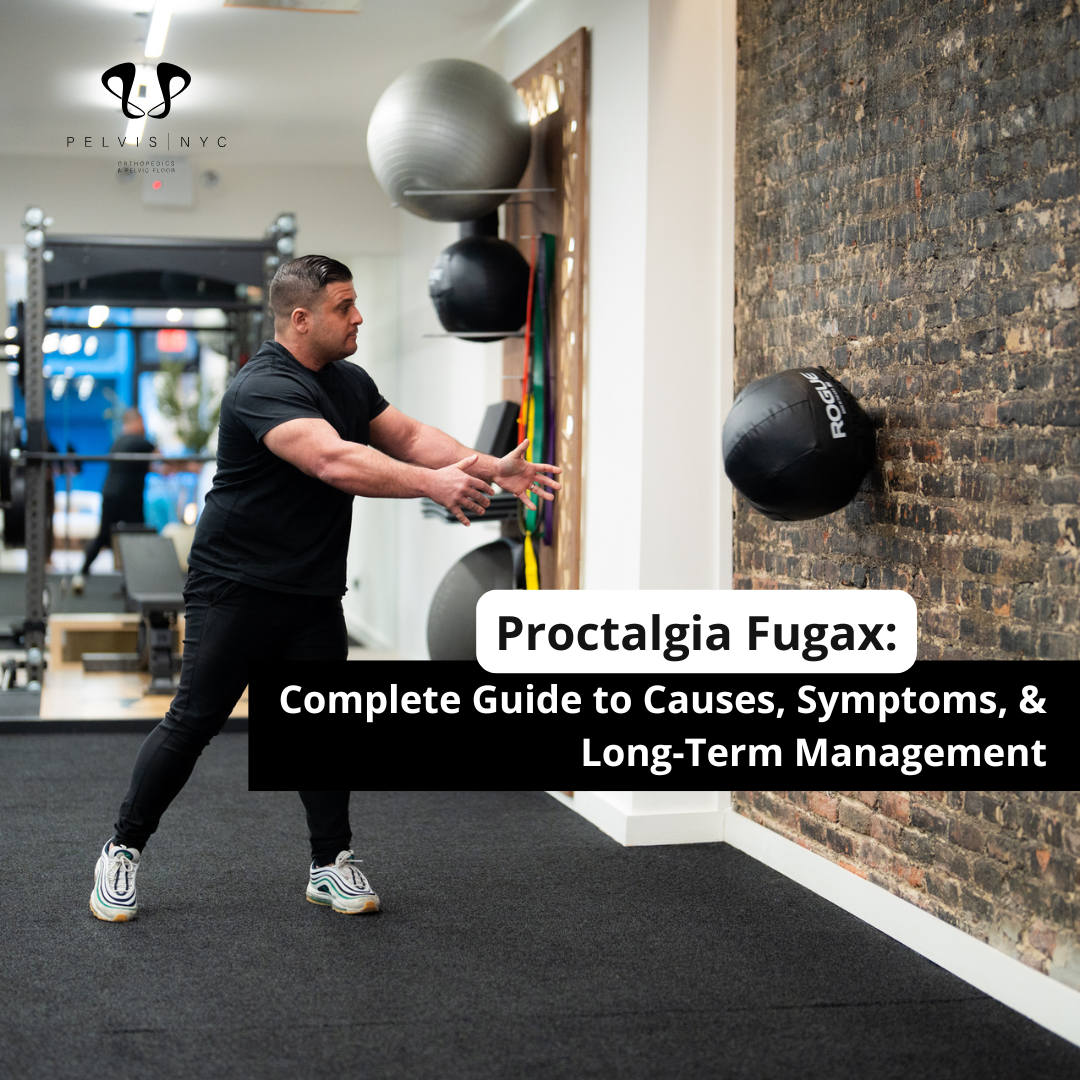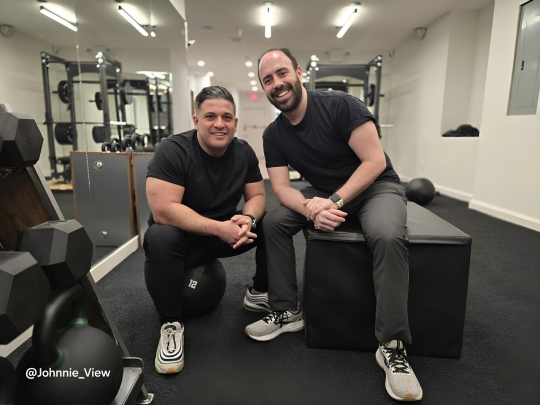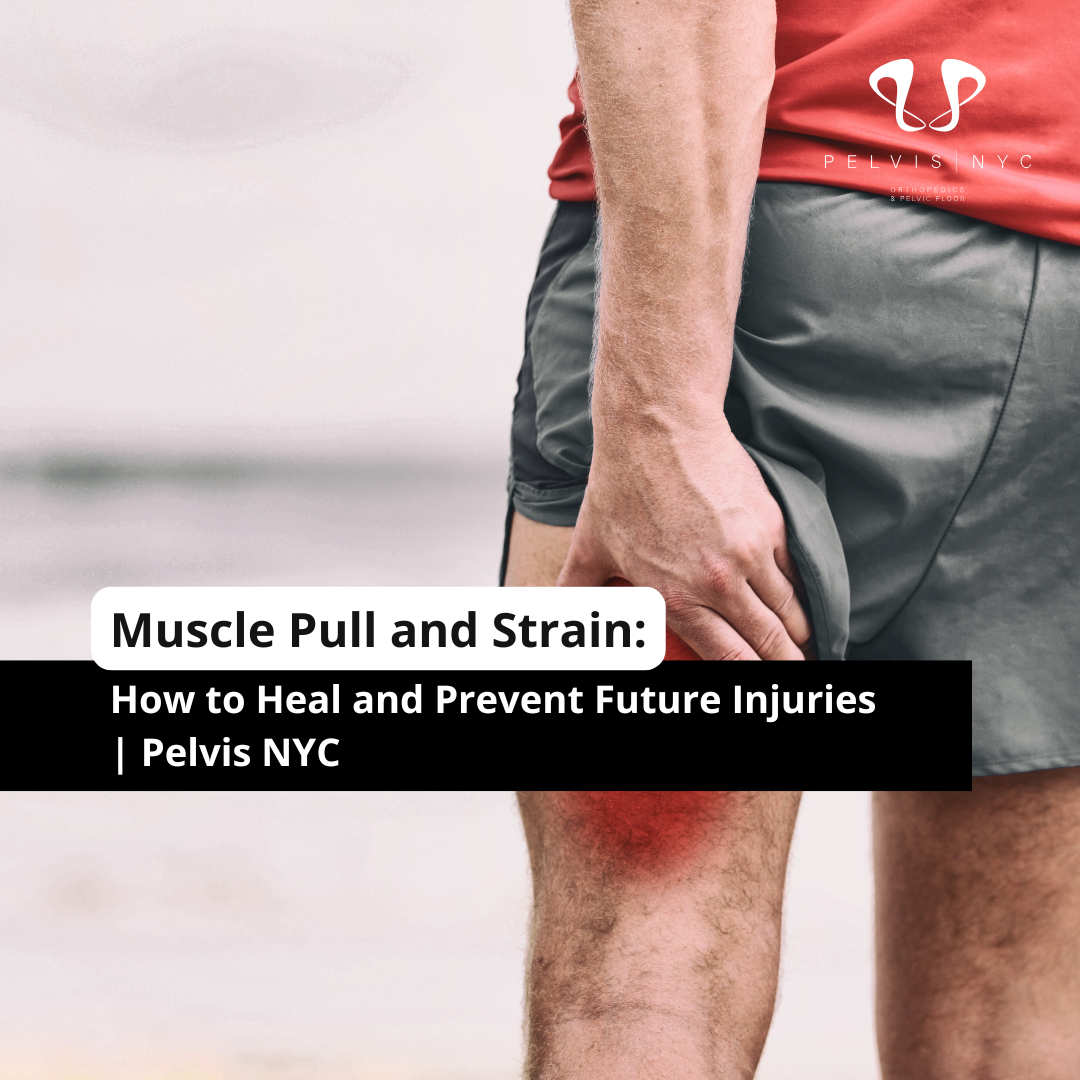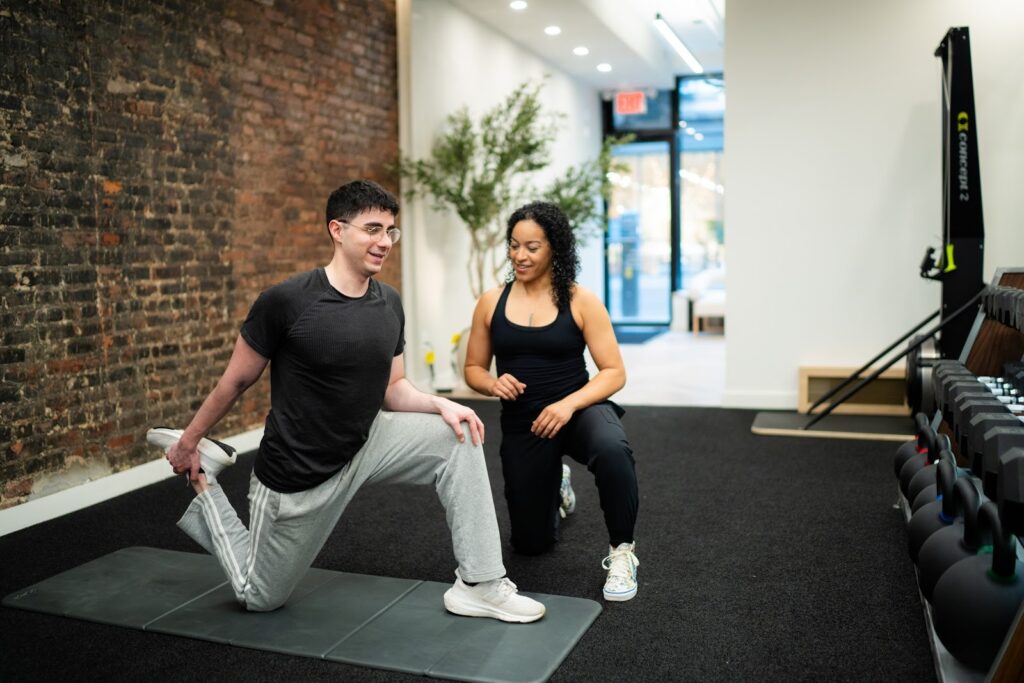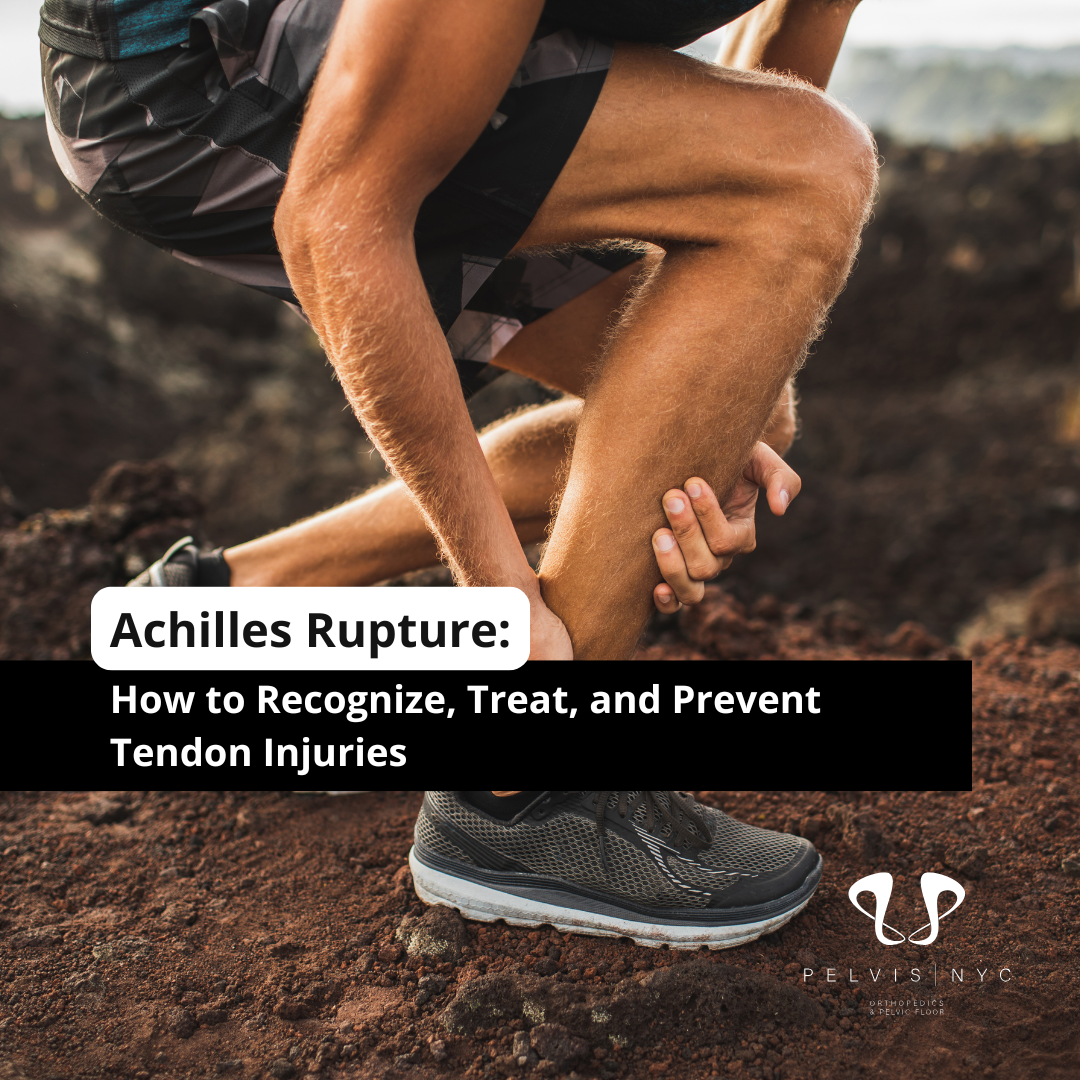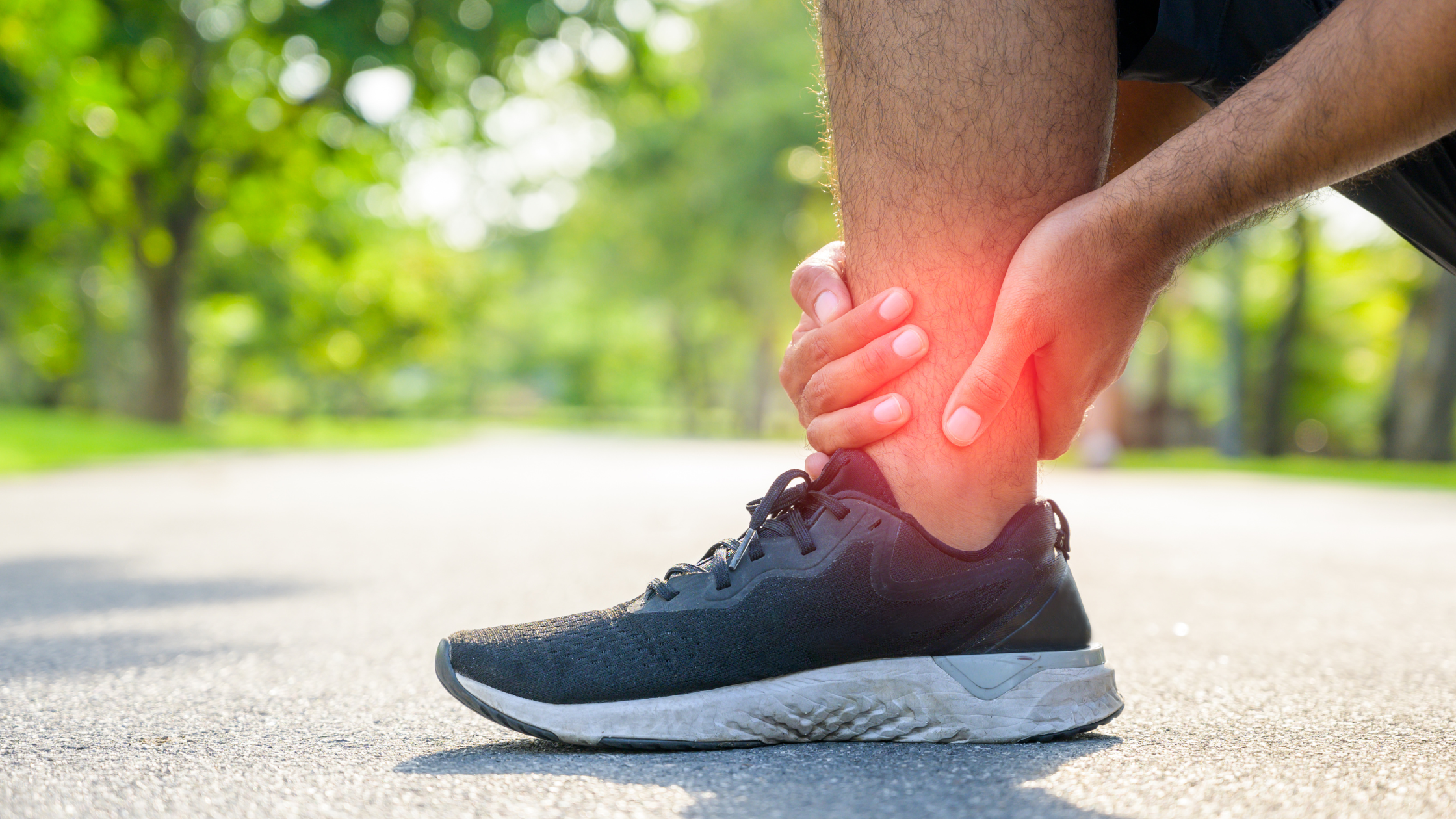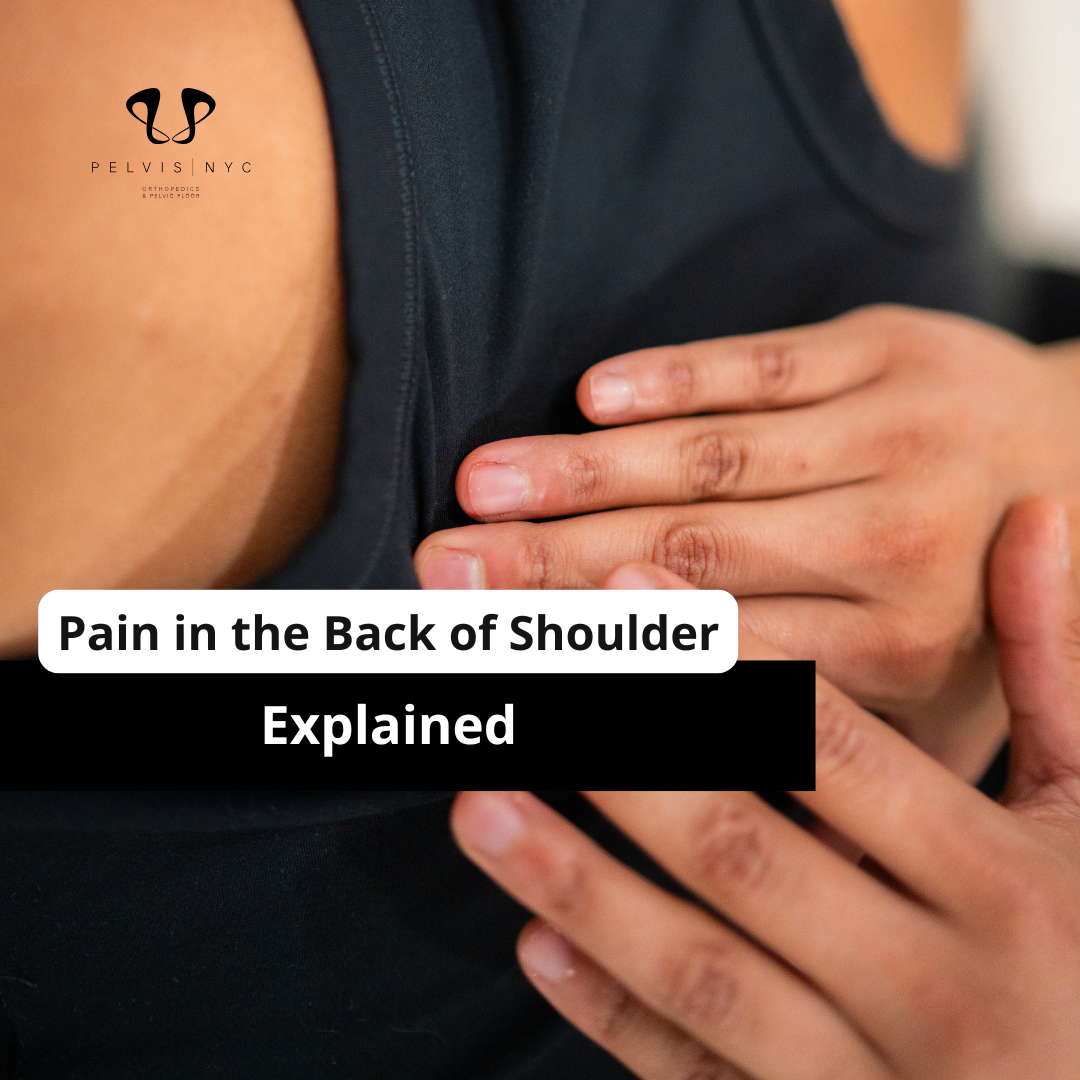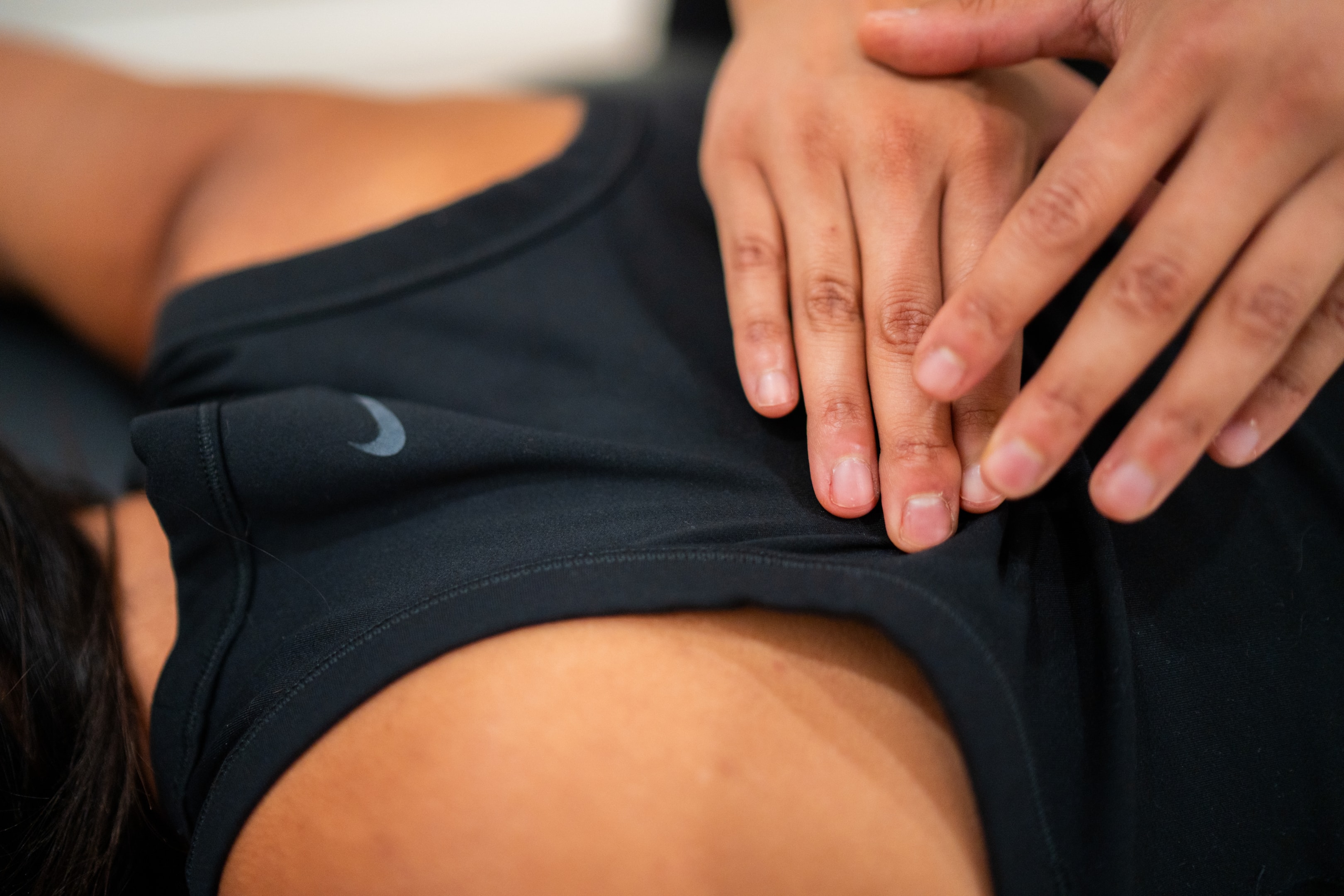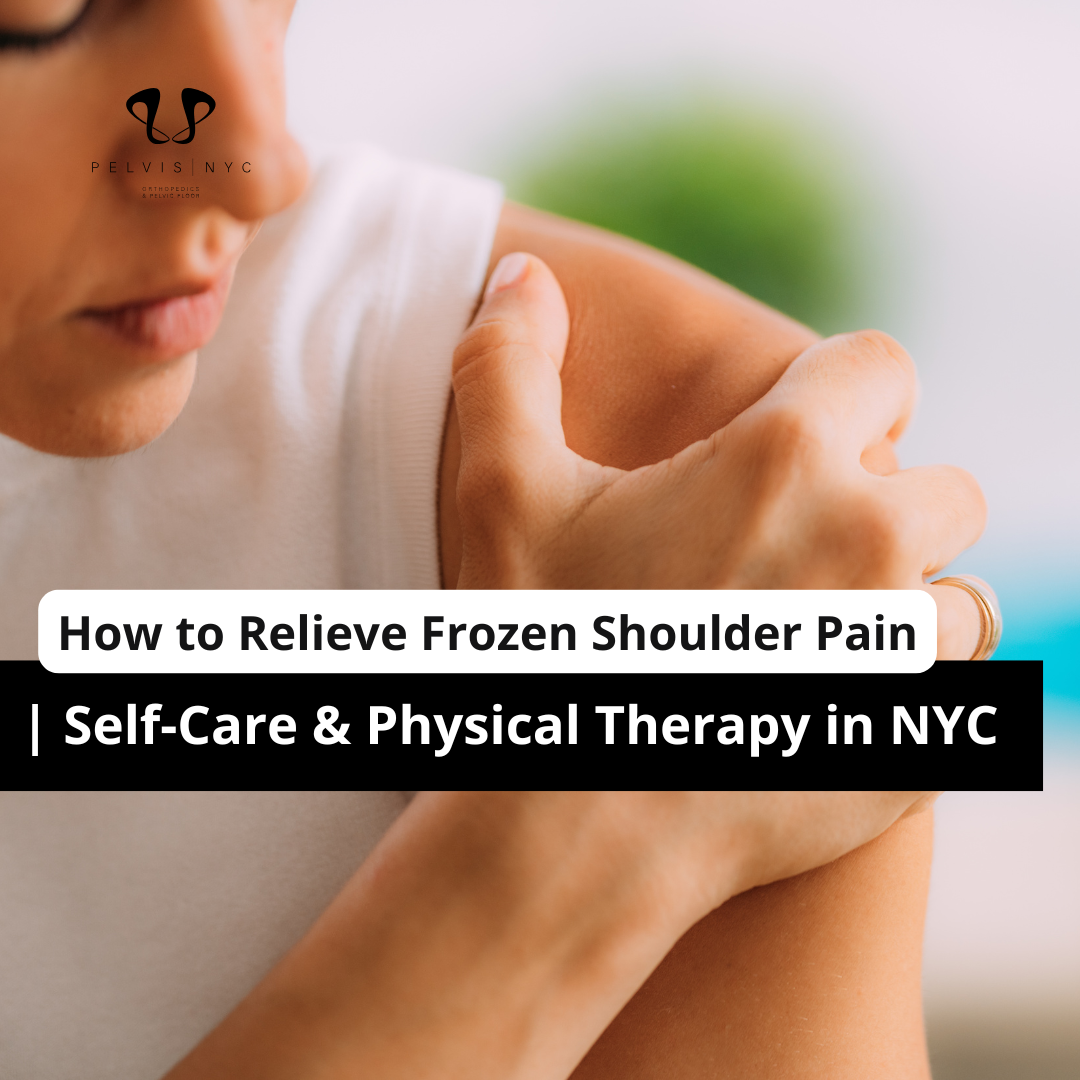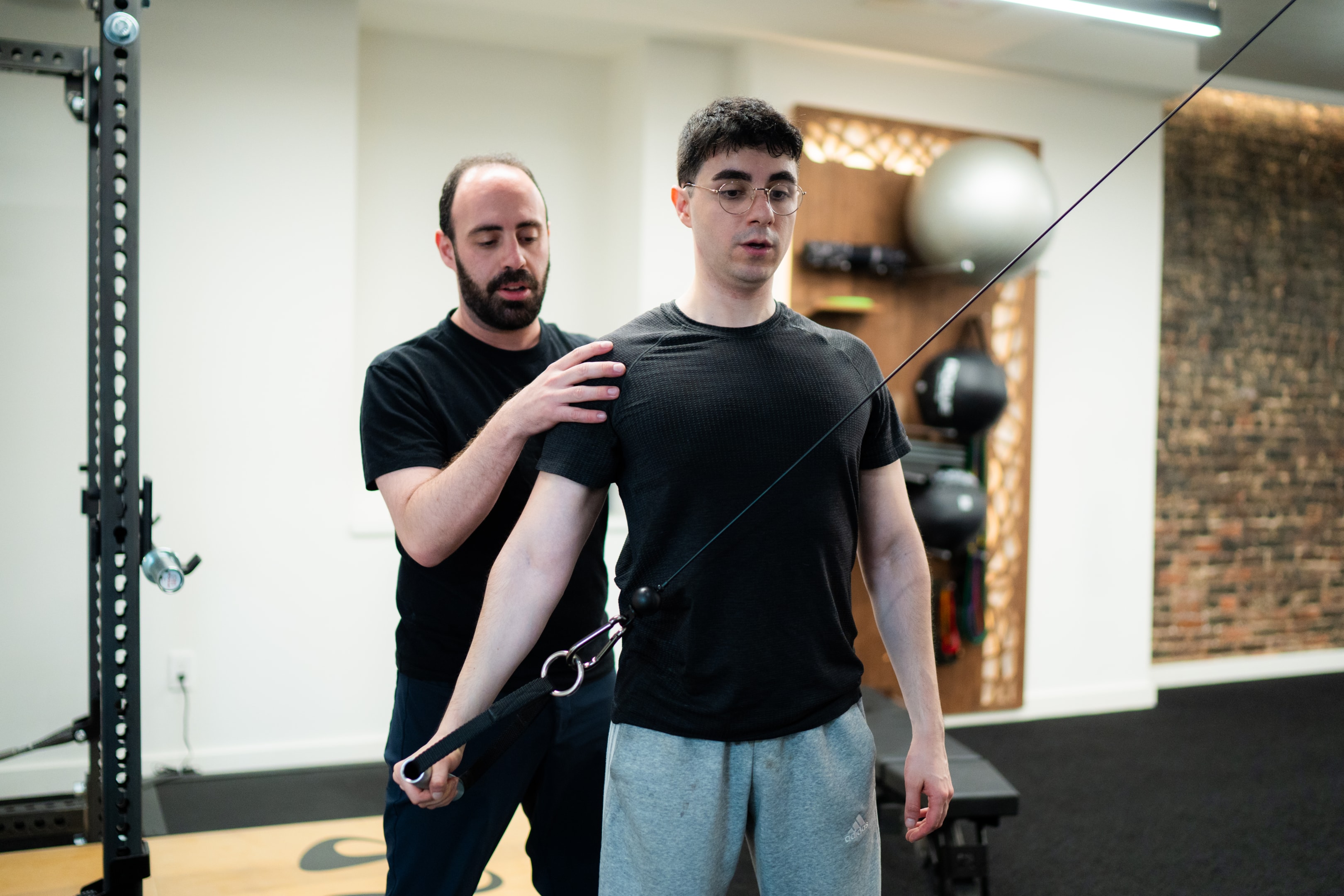Proctalgia fugax exercises help manage sudden anal pain and severe pain caused by muscle spasms by focusing on relaxing the pelvic floor, strengthening key muscles, and reducing anal sphincter spasms. Techniques such as Kegel exercises, deep breathing, and hot water baths can prevent episodes, improve bowel control, and alleviate chronic proctalgia. Combining targeted movement with stress management is the most effective approach.
What Are Proctalgia Fugax Exercises?
Proctalgia fugax exercises are specific movements and techniques designed to relax the anal sphincter and pelvic floor muscles that cause sudden rectal pain. These exercises target both the internal and external anal sphincters, improving blood flow, reducing tension, and preventing the brief but intense muscle spasms characteristic of proctalgia fugax. Proctalgia fugax is caused by a temporary spasm of the pelvic floor muscles, which leads to an acute episode of pain that can be sudden and severe.

Unlike generic stretches, these exercises are evidence-based, safe, and can be done at home. Over time, they can reduce the frequency and intensity of proctalgia fugax episodes and support overall pelvic floor health. While these episodes occur unpredictably and can be intense, proctalgia fugax is not usually a sign of a serious medical condition.
Why Exercises Are Important for Anal Pain
Most episodes of anal pain in proctalgia fugax result from muscle spasms, stress, or pelvic floor dysfunction. Targeted exercises help by:
- Reducing involuntary anal sphincter spasms
- Reducing painful spasms and stabbing pain associated with proctalgia fugax
- Improving muscle coordination in the pelvic floor
- Enhancing bowel movement control
- Relieving pressure from chronic pelvic tension
- Reducing recurrence of chronic proctalgia or levator ani syndrome
Exercises work best when combined with hot water baths, relaxation techniques, and stress management, and can help relieve muscle spasm during acute episodes.
Understanding the Anal Sphincter and Pelvic Floor
Anal Sphincter
The anal sphincter is a circular muscle responsible for controlling bowel movements. It consists of two parts:
Proctalgia fugax is thought to involve spasm of the anal sphincter muscles, particularly the external anal sphincter and pelvic floor muscles. Because other conditions can cause similar anal pain, it is important for a healthcare provider to diagnose proctalgia fugax to rule out other possible causes.
Internal Anal Sphincter
- Smooth, involuntary muscle
- Maintains continence at rest
- Can spasm suddenly, causing proctalgia fugax
Note: Other causes of anal pain, such as colorectal disease, should be ruled out by a healthcare provider.
External Anal Sphincter
- Skeletal, voluntary muscle
- Allows conscious control of defecation
- Can tighten with stress or tension
Proctalgia fugax exercises target both muscles to relax involuntary spasms while strengthening voluntary control.
Pelvic Floor
The pelvic floor supports the bladder, rectum, and reproductive organs. Weak or overly tense pelvic floor muscles contribute to:
- Chronic anal pain
- Levator ani syndrome
- Recurrent proctalgia fugax episodes
Pelvic floor muscle spasm is a key factor in proctalgia fugax, often causing sudden and severe anal or rectal pain. Pelvic floor muscle spasm release techniques, such as gentle massage and pressure point therapy, are important components of comprehensive pelvic health care for managing these symptoms.
Exercises that improve pelvic floor function reduce tension, increase blood flow, and prevent muscle spasms.
- Certain exercises can relieve pelvic floor tension, support pelvic health care, and help manage pelvic floor muscle spasm.
Muscle Spasms and Chronic Proctalgia
A muscle spasm occurs when the anal sphincter contracts involuntarily. Muscle spasms can cause intense rectal pain, rectal discomfort, and lower rectal pain, which are common symptoms of proctalgia fugax pain and other forms of anorectal pain. In proctalgia fugax, spasms are sudden, brief, and extremely painful. Chronic proctalgia refers to repeated episodes or persistent pelvic floor tension, often seen in levator ani syndrome. Exercises help by:
- Stretching tight muscles
- Training relaxation
- Enhancing neuromuscular control
The goal is to break the spasm cycle and improve bowel movement comfort.
Deep Breathing Exercises
Deep breathing (diaphragmatic breathing) relaxes the pelvic floor and reduces sphincter tension.
How to do it:
- Sit or lie comfortably.
- Place one hand on your belly.
- Inhale deeply through your nose for 4–5 seconds, focusing on sending your breath into your lower abdomen and feeling a gentle bulge between your sitting bones.
- Hold for 1–2 seconds.
- Exhale slowly for 6–7 seconds, allowing pelvic muscles to release.
- Repeat 5–10 times, 2–3 sessions per day.
Why it works: Deep breathing activates the parasympathetic nervous system, which reduces involuntary anal sphincter contractions and improves blood flow to the pelvic region. Focusing on the lower abdomen and creating a gentle stretch and gentle bulge between the sitting bones helps relax the pelvic floor muscles.
Kegel Exercises
Kegels strengthen the external anal sphincter and pelvic floor muscles. Strengthening improves voluntary control over bowel movements and reduces hyperactivity of involuntary muscles.
How to do Kegels for Proctalgia Fugax:
- Identify pelvic floor muscles (the muscles you use to stop urination midstream).
- Contract these muscles gently for 3–5 seconds.
- Relax for 5–10 seconds.
- Repeat 10–15 times per session, 2–3 times per day.
Regular Kegel practice helps improve muscle tone in the pelvic floor, supporting better muscle function and coordination.
Important: Focus on relaxation between contractions. Over-tightening can worsen spasms.
Hot Water Bath (Sitz Bath)
A hot water bath is a simple, effective way to relax the anal sphincter and pelvic floor muscles.
Method:
- Fill a sitz bath or tub with warm water (37–40°C / 98–104°F).
- A hot water bath potter can be used to maintain the ideal water temperature for therapeutic benefit.
- Sit for 10–15 minutes.
- Repeat 1–2 times daily or during a proctalgia episode.
Benefits:
- Reduces anal sphincter spasm
- Relieves pain during episodes
- Promotes blood flow for healing and relaxation
Exercises for the External Anal Sphincter
- Pelvic Floor Lifts:
- Lie on your back, knees bent.
- Tighten external anal sphincter and lift pelvic muscles upward.
- Hold 3–5 seconds, relax for 5–10 seconds.
- Repeat 10–15 times.
- Bridge Pose with Squeeze:
- Lie on back, knees bent, feet flat.
- Lift hips while squeezing pelvic floor and external anal sphincter.
- Hold 3–5 seconds, lower slowly.
After completing these exercises, you can also apply gentle pressure or perform self-massage to the inner buttocks area. This technique may help relax the external anal sphincter and relieve discomfort from muscle spasms.
Effect: Strengthens voluntary control, reducing the risk of uncontrolled spasms.
Exercises for the Internal Anal Sphincter
Since the internal sphincter is involuntary, exercises focus on relaxation and gentle stretching rather than strengthening. These exercises are effective proctalgia fugax treatments that help relieve proctalgia fugax by reducing anal muscle spasm:
- Pelvic floor relaxation stretches:
- Child’s pose
- Happy baby pose
- Deep squat stretch
- Gentle anal release techniques:
- Gloved finger massage (if comfortable and approved by a healthcare provider)
- Combining with deep breathing
These exercises reduce involuntary spasm frequency.
Bowel Movements and Exercise Integration
Regular bowel habits support pelvic floor health and reduce anal sphincter tension. Chronic constipation and irritable bowel syndrome can contribute to pelvic floor dysfunction and should be managed alongside exercise:
- Avoid straining or prolonged sitting on the toilet.
- Combine exercises with proper hydration and high-fiber diet.
- Try Kegel and relaxation exercises before bowel movements to ease anal passage.
Tip: Consistency in exercises directly correlates with smoother bowel movements and fewer proctalgia fugax episodes.
Electrical Stimulation Therapy
Electrical stimulation uses mild, targeted impulses to:
- Relax hyperactive anal sphincter muscles
- Strengthen weak pelvic floor muscles
- Improve neuromuscular coordination
When it’s used: Often recommended for chronic proctalgia or levator ani syndrome unresponsive to basic exercises. Electrical stimulation is frequently included as part of a broader physical therapy treatment approach for proctalgia fugax, which involves a structured, individualized plan to address underlying pelvic muscle dysfunction. It should always be supervised by a healthcare provider or pelvic floor therapist.
Levator Ani Syndrome and Its Relation to Exercises
Levator ani syndrome is chronic pelvic floor pain caused by tension in the levator ani muscle. Symptoms include dull, aching rectal pain and prolonged discomfort.
How exercises help:
- Stretch and relax levator ani
- Reduce pressure on anal sphincter
- Improve blood flow and nerve function
- Combine with deep breathing and hot water baths for best results
Pelvic floor physiotherapists and a pelvic floor physiotherapist can provide specialized exercises and techniques to relieve pelvic floor tension and muscle spasms. For persistent or severe symptoms, consult a medical practitioner for diagnosis and further management.
Targeted exercises reduce both acute episodes and long-term discomfort.
Step-by-Step Exercise Routine for Proctalgia Fugax
Daily Routine (Approx. 15–20 minutes)
Episodes of proctalgia fugax often occur without any apparent trigger and typically last only a few seconds, making them unpredictable and challenging to manage. This routine may help reduce frequency and severity.
- Warm Up: Sit in a hot water bath for 5–10 minutes.
- Deep Breathing: 5–10 cycles of diaphragmatic breathing.
- Pelvic Floor Stretching:
- Child’s pose (30–60 seconds)
- Deep squat (30–60 seconds)
- Kegel Exercises: 10–15 repetitions, 2–3 sets.
- Bridge Pose with Anal Squeeze: 10–15 repetitions, 2 sets.
- Relaxation Cool-Down: Lie on back, focus on pelvic floor release and deep breathing for 2–3 minutes.
Frequency: Daily, with additional exercises during stressful periods or after bowel movements.
Real-World Example
A 32-year-old software engineer experienced nightly proctalgia fugax episodes, where episodes occur unpredictably, often at night. After implementing a daily routine of Kegels, deep breathing, stretching, and sitz baths, episodes decreased from 3–4 per week to 1–2 per month. Incorporating exercises into a regular schedule significantly improved pelvic floor control and reduced anxiety associated with pain.
Tips for Maximum Effectiveness
- Consistency is key—perform exercises daily.
- Combine with hydration, high-fiber diet, and stress management.
- Track your episodes to identify triggers.
- Avoid over-tightening muscles; focus on relaxation as much as strengthening.
- Consult a healthcare provider if pain persists or worsens. If self-care does not help, a physical examination by a healthcare provider is important for diagnosing anal pain, ruling out other conditions, and ensuring appropriate treatment.
Take Control of Your Pelvic Health — Visit Pelvis NYC
If you struggle with recurrent anal pain, Pelvis NYC offers specialized evaluations, personalized exercise plans, and hands-on therapy to manage proctalgia fugax, levator ani syndrome, and chronic pelvic floor tension.
✅ Regain comfort, confidence, and control over your pelvic health.
Schedule Your Consultation at Pelvis NYC

FAQs
1. What are proctalgia fugax exercises?
Exercises designed to relax the anal sphincter and pelvic floor, reduce muscle spasms, and prevent acute rectal pain.
2. How do Kegel exercises help?
They strengthen voluntary control of the external anal sphincter and improve overall pelvic floor function, reducing involuntary spasms.
3. Can hot water baths help proctalgia fugax?
Yes. Warm baths relax the anal sphincter and pelvic floor muscles, easing pain during episodes.
4. What is the difference between internal and external anal sphincter exercises?
Internal sphincter exercises focus on relaxation and stretching; external sphincter exercises focus on strengthening voluntary control.
5. How does deep breathing help?
Diaphragmatic breathing reduces pelvic tension and activation of the parasympathetic nervous system, thereby preventing spasms.
6. Can electrical stimulation help?
Yes, for chronic or severe cases, electrical stimulation can relax spasms and strengthen pelvic floor coordination under professional supervision.
7. Are these exercises safe to do daily?
Yes, as long as you avoid over-tightening and follow proper technique. Consult a healthcare provider if unsure.
8. How long until I see results?
Many people notice a reduction in episode frequency and intensity within 4–6 weeks of consistent practice.

